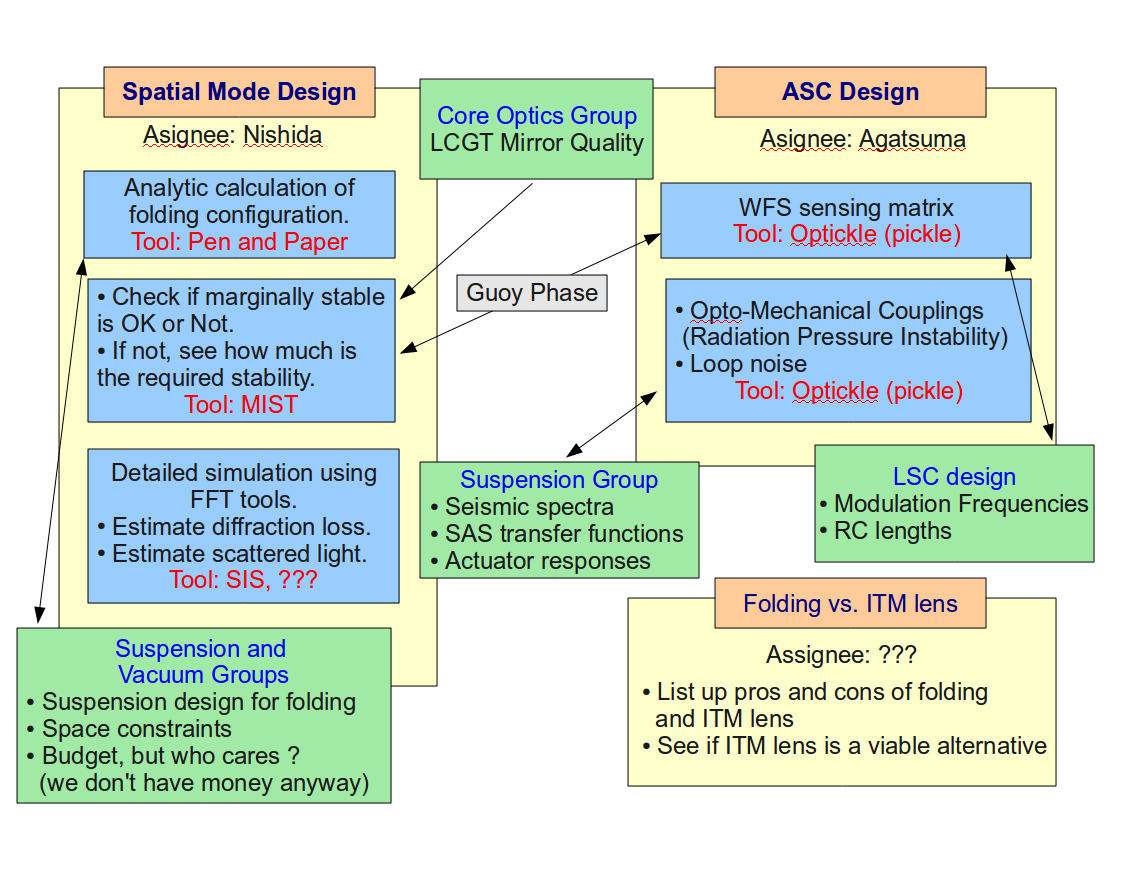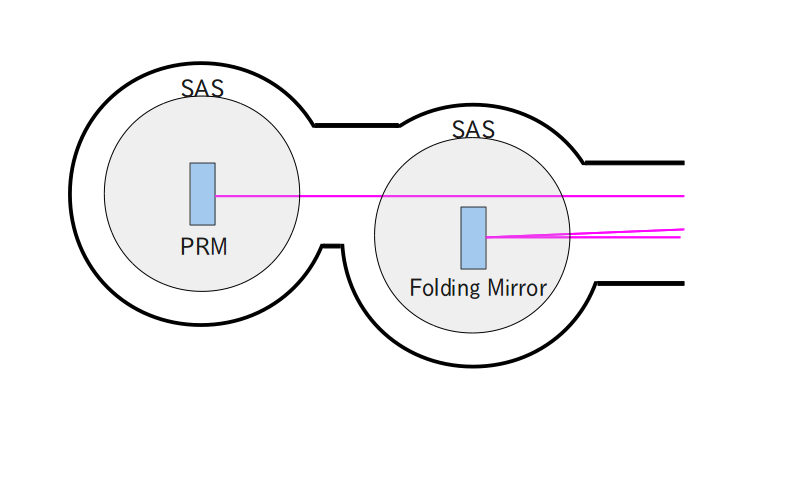Spatial Mode Design & Alignment Sensing
The purpose of this task is to decide on the cavity g-factors (for the RCs and the arms), and then build a robust alignment sensing and control scheme.
Background of the task
It has been always a headache for the first generation large IFOs to have a marginally stable power recycling cavity. Because it is only marginally stable, many higher order modes can resonate in the PRC. Then only a small deformation or imperfection of the arm cavities can scatter the light into higher order modes and degrade the dark port contrast or the carrier-sideband overlap.
In order to mitigate these problems, it is desired to have a stable PRC and SRC. In order to do this, however, we have to answer several questions.
(1) How do we make the RCs stable ?
(2) How stable do we want to make the RCs ?
The well known answer to the first question is folding of the RCs. Another possibility is to put a curvature on the AR surface of the ITMs so that they act as lenses. One important task of this group is to evaluate advantages and disadvantages of these schemes.
The second question relates to the WFS signals. If the RCs are too stable, TEM01 or TEM10 modes cannot resonate in the RCs. In this case, the WFS signals from the arm cavities, which make use of the TEM00 and TEM01/10 interference, are strongly suppressed. Therefore, we have to hit a balance between the stability of the RCs and the WFS signal strength.
Task List
The tasks of this group are shown in a map below.

Spatial mode design
There are two main paths in the task list. One is the design of the IFO spatial mode. Logically speaking, the necessity of the stable RCs has to be first examined. However, we do not have enough time and there is already a plenty of evidence which strongly indicates the necessity of the stable RCs. Therefore, we first design the folding configuration (ROCs and locations of the folding mirrors to achieve roughly 20deg Guoy phase shift) by hands. This task involves the intense communication with the suspension and vacuum teams to see if the folding is really possible. A preliminary estimate of astigmatism effect should also be checked.
After the initial analytic calculation, we shall proceed to more detailed calculations using MIST. At this point, we want to evaluate how bad a marginally stable cavity is. More specifically, we want to know the SNR degradation by imperfections in the arm cavity mirrors. This step should tell us what is the minimum Guoy phase change required in the RCs. This information is transferred to the ASC design to calculate WFS signals.
After the modal expansion calculations by MIST, we should endeavour to perform full electric field simulations using FFT tools. Here, we can estimate the effect of diffraction loss. Estimation of scattered light is also important. This is done by some ray tracing tools, which I don't know.
ASC design
The design of an Alignment Sensing and Control (ASC) scheme should first start from looking for a way to get a decent sensing matrix. Then the robustness of the sensing matrix has to be checked against the loop noise assuming a realistic seismic noise and suspension response. For this purpose, we need inputs from the suspension group. We may, in turn, put requirements on the seismic isolation performance.
Some initial thoughts
I just put my random ideas here. Join me and feel free to edit !
How to accommodate folding mirrors ?
- Folding mirrors need to be sesmically isolated as good as PRM and SRM.
- One possible configuration is shown below.

Arguments against marginally stable RCs
- It resonates many higher order modes.
- Degrades the MI contrast.
- Reduce the AF sidebands going to the dark port due to the mode mismatch between the arm cavities and the SRC.
- Degrades the overlap of RF sidebands and the carrier, which results in poor RF signals.
Arguments against ITM lenses
- Scattered light.
- How to make a pick off port ?
